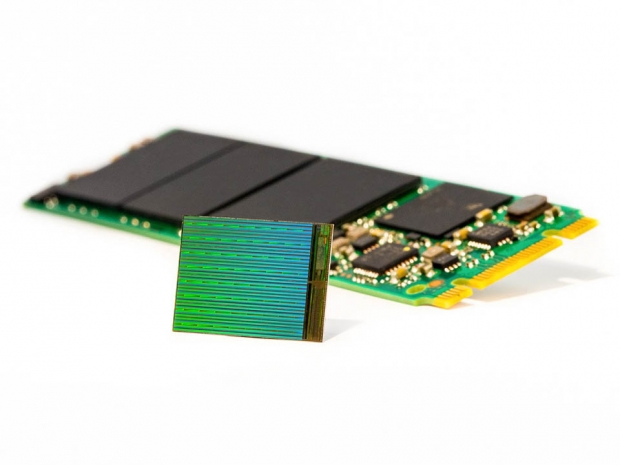Sources say that yield rates for major suppliers of 3D NAND technology have been relatively instable since the beginning of 2017. Suppliers including Samsung Electronics, Micron, Western Digital and Toshiba have all introduced 64-layer 3D NAND flash products, while SK Hynix recently introduced the industry’s first 72-layer 3D NAND chips.
As chipmakers position themselves for increased expansion of 3D NAND output, the output for 2D NAND is expected to be reduced substantially. Samsung, for instance, is expected to begin operating a new plant in Pyeongtaek in July to further expand its 3D NAND production capacity. Micron will start producing 64-layer 3D NAND chips in the second quarter, with mass shipments becoming ready for the second half of the year. The company promises “meaningful output” by the end of their fiscal year in December.

Source: Micron
2D NAND shortage results in price hikes passed to PC vendors
The global supply shortage of NAND flash has so far resulted in a 12 to 16 percent price hike for mainstream MLC-based SSDs and a 10 to 16 percent hike for TLC-based SSDs. Outlets like DRAMeXchange say the trickle-down effect shows price increases will be passed along to PC manufacturers, which have been ramping up SSD installations in laptops due to consumer preference
Second-gen 3D NAND to decrease TLC chip costs by around 30 percent
For now, most 32-layer first generation 3D NAND has already reached mature yields comparable to that of planar NAND processes. Micron says that 64-layer 3D NAND will increase the total GB-per-wafer by more than 80 percent, while decreasing cost-per-bit of TLC-based chips by around 30 percent.
72-layer 3D TLC NAND to include a 20 percent higher external interface
The sources noted that yield rates for other 3D NAND flash vendors are expected to improve substantially in the second half of 2017. SK Hynix will begin mass production of its 72-layer 256Gb TLC NAND during this timeframe, with 256Gb (32GB) chips becoming available for mobile applications and smartphones in Q3, and 512Gb (64GB) arriving in Q4. The 72-layer chips feature higher performance due to a 20 percent higher external interface (Toggle 2.0) data rate, a 50 percent larger block size over 48-layer 3D TLC chips, and a lower page programming time.




